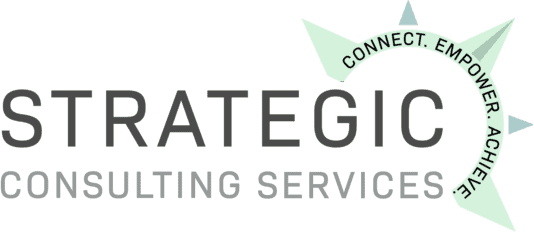Using Technology to Create a More Inclusive Workplace
In today’s global economy, fostering diversity and inclusion in the workplace is more important than ever. A diverse workforce enriches the corporate culture, drives innovation, improves decision-making, and enhances employee engagement. Moreover, organizations prioritizing inclusivity tend to outperform their less diverse counterparts, as they are better equipped to understand and cater to a wider range of clients and customers. Technology has taken center stage in facilitating an inclusive work environment as we move into the digital age. By breaking down communication barriers, providing accessibility solutions, and helping eliminate biases, technology plays a crucial role in ensuring that everyone can succeed in the workplace, regardless of their background, abilities, or location.
Modern communication tools for seamless collaboration
In an increasingly interconnected world, modern communication tools have become essential for enabling seamless collaboration among diverse and geographically dispersed teams. Video conferencing platforms like Zoom and Microsoft Teams have transformed how we interact with our colleagues, allowing real-time communication and face-to-face discussions without physical presence. This reduces barriers for remote and international employees and fosters a sense of unity and belonging among team members from different backgrounds and cultures.
In addition to video conferencing, instant messaging applications such as Slack and Google Chat have become indispensable for fast and efficient team communication. These platforms allow employees to exchange information and ideas in a more informal and accessible manner, leading to increased engagement and collaboration. With features such as file sharing, direct messaging, and the ability to create dedicated channels for specific projects or topics, these tools ensure that everyone is kept in the loop and can contribute their unique perspectives.
Project management software like Asana and Trello further enhances collaboration by providing a centralized platform for tracking tasks, setting deadlines, and managing team workflows. These tools allow team members to easily monitor their progress, stay organized, and collaborate on tasks, regardless of their location or time zone.
By utilizing these modern communication tools, organizations can create a more inclusive work environment that empowers all employees to contribute to their full potential. This, in turn, leads to a more diverse and productive workforce that is better equipped to meet the challenges of the rapidly evolving global market.
Assistive technologies for differently-abled employees
Assistive technologies have become vital for creating inclusive workplaces catering to differently-abled employees’ needs. Text-to-speech and speech-to-text software are prime tools supporting individuals with auditory or speech impairments. These technologies convert written text into spoken words or transcribe spoken language into text, enabling effective communication and collaboration among team members with diverse abilities.
Screen readers and magnifiers are essential for visually impaired employees in providing an accessible digital work environment. Screen readers convert on-screen text and elements into audio descriptions, while magnifiers enlarge text and images to facilitate reading and navigation. These tools empower visually impaired individuals to participate fully in the workplace, fostering greater diversity and inclusion.
Customizable keyboards and alternative input devices are other key components of an accessible workplace. These technologies offer adaptive solutions for individuals with limited mobility or dexterity, allowing them to interact efficiently with computers and other devices. Such tools may include ergonomic keyboards, voice-activated controls, or eye-tracking systems, all of which can be tailored to meet the specific needs of each employee.
Real-time captioning and sign language interpreting services are indispensable for promoting accessibility during meetings, webinars, and presentations. These services ensure that hearing-impaired employees can actively participate in discussions and stay informed about the latest developments within the organization.
The impact of these assistive technologies on workplace accessibility is profound. By implementing such tools, organizations can create an inclusive environment that values all employees’ unique skills and contributions, regardless of their abilities. This, in turn, promotes a more diverse and dynamic workforce that is better equipped to tackle the challenges of the modern business landscape.
Embracing Technology: Shaping the Future of Inclusive Workplaces
leveraging technology for workplace inclusivity is paramount in today’s diverse and globalized world. From modern communication tools that facilitate seamless collaboration to assistive technologies that cater to the unique needs of differently-abled employees, technology has the power to revolutionize the way we approach diversity and inclusion in the workplace. By harnessing these tools, organizations can create a more inclusive environment where employees from all backgrounds, abilities, and locations can contribute their talents and thrive.
Organizations must adopt and adapt these technologies to suit their specific needs and foster a culture that values diversity and inclusion. This leads to a more innovative and productive workforce and enhances employee engagement and satisfaction. As businesses continue to evolve and the world becomes increasingly interconnected, our collective responsibility is to work towards a future where every workplace is inclusive, diverse, and accessible. By embracing the power of technology, we can create a more equitable and just society where everyone has the opportunity to succeed and contribute to our shared progress.
Strategic Consulting is Your Partner in Managing Workplace ADA Issues
Our team is here to help with your disability accommodation issues, vocational rehabilitation needs, ergonomic evaluations, and other employee needs.
For twenty years, we have been helping companies in the Pacific Northwest with worker injuries, disabilities, and other vocational challenges. We are here to support you in this unprecedented era of remote working and WFH.
We have partnered and provided solutions to some of the largest companies in the world (such as Boeing, Microsoft, and Amazon). But, at our core, we are still “people taking care of people,” one project at a time. Our success is built upon and providing you the best solution to your workplace challenge. Contact us today by filling out a form (below), submitting a referral, or visiting our ‘Contact Us‘ page to find your nearest office.
Ric has been working in the industry since 2002, specializing in developing employer jobsite analysis and light duty programs, ergonomics consultations and adjustments, disability accommodations and providing effective return to work solutions. Ric is Matheson trained in Ergonomics and is a Certified Ergonomics Evaluation Specialist. He earned a Bachelor of Arts Degree in Psychology from Western Washington University and later his Master’s Degree, M.Ed., Education Counseling from Seattle Pacific University. Ric is currently a Registered Vocational Rehabilitation Counselor for the Department of Labor and Industries and has been a Certified Disability Manager Specialist since 2006.

